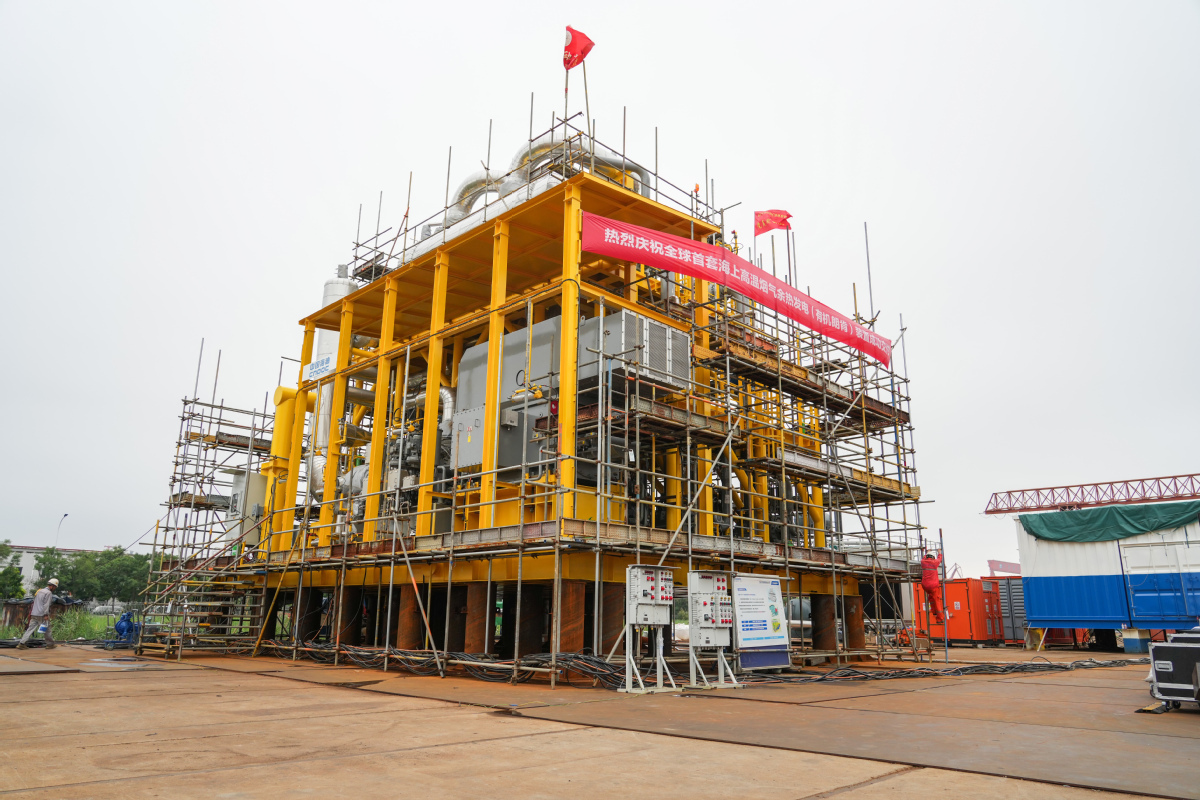
A picture of the world's first 5MW offshore high-temperature flue gas waste heat power generation unit. [Photo provided to chinadaily.com.cn]
China National Offshore Oil Corp announced on Tuesday the delivery of the world's first 5MW offshore high-temperature flue gas waste heat power generation unit in Tianjin, a groundbreaking achievement marking new progress in the utilization of flue gas waste heat in offshore oil and gas field power stations.
The delivery also serves as a milestone in promoting green and low-carbon development in offshore oil and gas fields under the dual carbon goals, said the company.
The unit is set to be demonstrated in the Wenchang 9-7 oilfield development project, it said.
Power stations serve as the heart of offshore platforms, typically generating electricity by burning self-produced oil and gas. However, this process releases large amounts of high-temperature flue gas, which is a source of carbon emissions in offshore oil and gas development.
The power generation unit utilizes the high-temperature flue gas produced during power station operations as a heat source, effectively converting the waste heat into clean power. Compared to traditional flue gas combustion and emissions, the installation of this high-temperature waste heat power generation unit can increase the waste heat utilization potential of the power station to 60 to 70 percent, significantly improving energy efficiency, it said.
The overall energy efficiency of the main power stations is expected to increase by 7 percent, thereby reducing the consumption of crude oil and natural gas in offshore oil and gas fields, said An Weizheng, chief engineer of Mechanical, Electrical and Instruments at the Engineering Research and Design Department of CNOOC Research Institute.
It is estimated that after the unit is put into operation, the annual waste heat power generation could reach 40 million kWh, enough to meet the annual electricity demand of 30,000 households. Additionally, it is expected to save approximately 300 million cubic meters of natural gas consumption and reduce carbon dioxide emissions by around 800,000 tons, equivalent to planting 7.5 million trees, he said.
Source: By Zheng Xin, chinadaily.com, Aug 13, 2024 [https://www.chinadaily.com.cn/a/202408/13/WS66bb572aa3104e74fddb9cdf.html]

